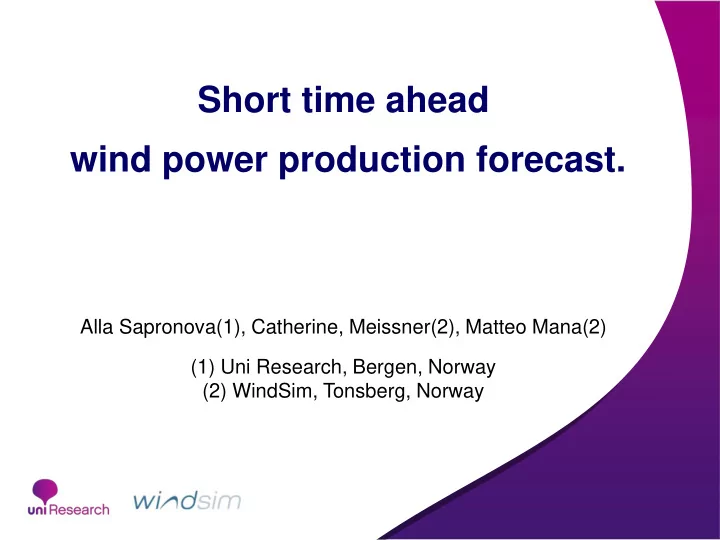

Short time ahead wind power production forecast. Alla Sapronova(1), Catherine, Meissner(2), Matteo Mana(2) (1) Uni Research, Bergen, Norway (2) WindSim, Tonsberg, Norway
Introduction new model to forecast wind power production of the park 5- to 30-minutes ahead the model is based on machine learning techniques and uses historical wind and power production time series
Model description 6 month historical data from several on-shore wind parks from Sweden and Norway time series analysis of historical park production and NWP data ANN uses the historical power production values as inputs ANN uses wind speed and direction time-series and hourly NWP data, in addition to historical power production length of a time window is two times longer than the prediction horizon
Validation of the model (RMSPE on predicted power production)
Model's modification: double-module architecture
Validation of the new model
Model's modification: selection of the second layer
Validation of ANN/SVM model (RMSPE on predicted power production)
Categorization approach
Conclusions model uses NWP, historical wind speed and power production data and employs machine learning methods and categorization approach. best performance is shown for combination of ANN and kernel method for double-module model model shows that use of NWP data is not significantly improve the accuracy for very short time ahead forecast (5-10 minutes ahead), yet is valuable for 30 (and longer) minutes ahead forecasts. if categorization of an input variable is used, the better accuracy of the forecast can be achieved even with smaller number input variables.
Acknowledgments Thank you!
Recommend
More recommend